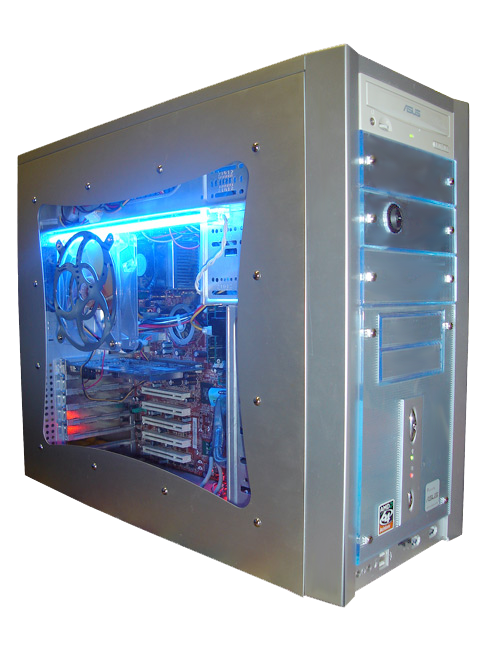In my previous post, I took a look at the four main categories that make up a computer system. In the next post, I'm going to look at the components which are inside the case itself.
Before I get there, I'd just like to spend a few minutes looking at the cases which house all of the components I'll be looking at.
Of all the PC case designs, the most popular and the one that you are most likely to see is the Tower. In fact, this design is so popular that I can't think of the last time I saw a case designed in a format other than a tower (excluding All-In-One Systems). Consequently, the 'Tower' has slowly evolved into different versions as I hinted above.
Study Reference Disclaimer.
Before I get there, I'd just like to spend a few minutes looking at the cases which house all of the components I'll be looking at.
 |
| Cooler Master Mid Tower Case (Nvidia Edition) |
Well, so what? It's just a box with components in it, right? Well yes, but also no.
Computer cases come in a variety of shapes, sizes and arrangements. The larger of these provide plenty of 'work room' inside to be able to access and replace components, or carry out fault finding. Naturally, these larger cases take up more space in the working environment than their smaller counterparts and, depending on where they are placed, can make the aforesaid environment a little untidy.
The opposite is true of the smaller variants of computer casing. These can be preferable if space is at a premium or the aim is to have the workings of a computer system tucked away, making the environment tidier and more aesthetic (e.g. in an office or reception area that may be considered 'front of house').
 |
| A PC Tower with a Case Mod |
Of all the PC case designs, the most popular and the one that you are most likely to see is the Tower. In fact, this design is so popular that I can't think of the last time I saw a case designed in a format other than a tower (excluding All-In-One Systems). Consequently, the 'Tower' has slowly evolved into different versions as I hinted above.
- The Full Tower - Used to act as small servers and by computer enthusiasts as they provide plenty of space for components such as multiple hard drives, expanded memory and so on. Sometimes, the bulky or untidy nature of these cases is overcome through case modding, which strives to make the cases more aesthetic (often with great success!)
- The Mid-Tower - Quite possibly the most common of the tower designs (although in recent years the Mini Tower is competing heavily), they provide a good balance between available space for components (including the capability to expand) and the amount of physical workspace taken up in the environment. Again, there are plenty of Mid-Tower cases on the market with room to modify them.
- The Mini Tower - Also known as the Micro Tower. These towers are rapidly becoming as popular as the Mid-Towers and, in many areas, starting to overtake them in many settings. Many consumers are not concerned with modification or repair and the 'small is beautiful' aesthetic that appeals to society more and more makes this a real contender.
- The Slimline - Similar in general size to the Mini Tower, this variant of tower can be turned on it's side in order to save even more room in the working environment. An examples of a Slimline Tower is the Sony PS4
 |
| An example of a Slimline Tower. The Sony PS4 |
Study Reference Disclaimer.
Comments
Post a Comment